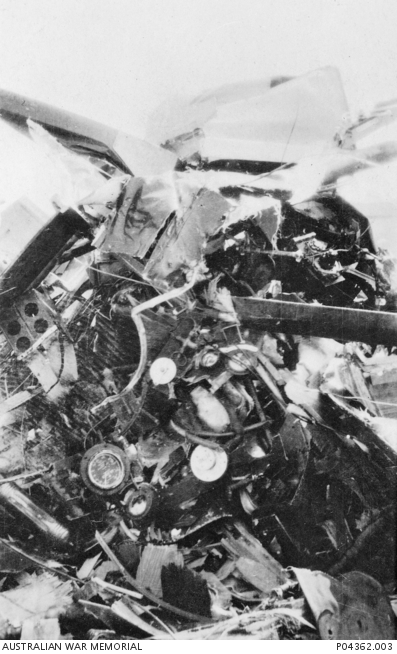Second Lieutenant Roy Lytton Cummings, No. 5 (Training) Squadron, AFC
A native of Franklin, Tasmania Roy Lytton Cummings enlisted in the AIF on 19 November 1914 and after training was posted to the 3rd Field Ambulance. He embarked for overseas service aboard HMAT A70 (Ballarat) on 9 September 1915 and saw a short period of service in the last month of the Gallipoli campaign.
Private Roy Lytton Cummings, 3rd Field Ambulance, 10th Reinforcements. C1041294
In January 1916, he successfully applied to be remustered as a Driver and saw service in France with No 4 Ammunition Sub Park at Rouen until July 1917, when he applied for a transfer to the Flying Corps and was accepted on 29 September 1917. Assigned to No 5 (Training) Squadron, Australian Flying Corps (based at Minchinhampton, Gloucestershire), in early 1918, Cummings quickly displayed an impressive flair for flying. Major Brown, commanding 5 Squadron AFC, wrote to Cummings’ father ‘he came to me as a pupil and did so well I had him made an instructor’. By May 1918, Cummings had passed his instructor’s course and was actively instructing at Minchinhampton.
On 28 August 1918 at approximately 7.25am Cummings and his pupil Lieutenant Charles William Scott, were co-piloting an Avro504K (serial no. D.9282). Both men were from No. 5 (Training) Squadron AFC. The weather was fair and visibility was good.
Corporal Cadet Ernest Howard Jefferys, a pupil from No. 6 (Training) Squadron AFC, had been ordered to fly for 30 minutes and practice vertical turns over Minchinhampton aerodrome that same morning. Jefferys was flying by himself in Avro No. D. 6. He turned into Cummings aircraft at a height of 1000-1500 feet whilst the machines were flying at right angles to each other. Jefferys machine was flying in a NE direction and he turned left colliding with Cummings machine, which was flying SE. The right wings of both machines came into contact causing them to crash to earth, killing all three occupants instantly. Cummings sustained a fractured skull, a fractured right femur and internal injuries. Both aircraft were written off.
The severely crumpled instrument panel and cockpit of the Avro 504K aircraft. C1041296
Following an inquest into Scott’s death, a verdict of pilot error on the part of Corporal Cadet Jefferys was reached. An inquest into Jeffery’s death concluded the accident was due to an error of judgement on the part of one of the pilots. Captain R. C. Phillipps Commanding Officer No. 6 Training Squadron AFC indicated Jefferys was a very promising pupil and was not to blame for the accident. Lieutenant Colonel W. O. Watt Commanding Officer 1st Training Wing AFC agreed. Accidental deaths were recorded in the cases of all three officers.
Cummings wrote to his mother just eight days before his death that ‘it is certainly a great chance instructing over here as there are bound to be some pretty good jobs going after the war. Tomorrow is our fortnightly holiday and Alan Payne and I have arranged to fly down to Exeter, which ought to be a good trip.’ The same Alan Payne described the crash at 7:25 on the morning of 28 August to Roy’s father: ‘Roy and his pupil Lieutenant Scott were having a fly before breakfast around the aerodrome when a pupil from another Squadron flying by himself, suddenly turned his machine upwards and crashed into Roy and Scott. The two machines were about 700 feet up when they collided and were partially locked together when they fell.’
All three airmen were buried with full military honours at Leighterton Church Cemetery, Gloucestershire.
AWM Holdings
REL32614 - Next of Kin plaque : Second Lieutenant R L Cummings, No. 5 Training Squadron, Australian Flying Corps
P01432.002 - c. 1917. Portrait of three Cummings brothers from Tasmania, who all became members of the Australian Flying Corps (AFC).
PR83/181 - Collection of personal letters and various service papers: Second Lieutenant R L Cummings, No. 5 Training Squadron, Australian Flying Corps

